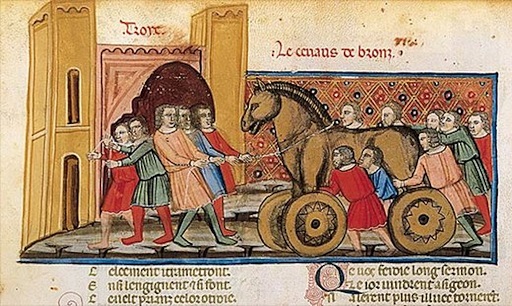1155-1160

In the twelfth century, the medieval French poet Benoît de Sainte-Maure wrote the Roman de Troie (Romance of Troy), an epic poem that recounted the events leading up to the Trojan War, the war itself, and its aftermath. Benoît de Sainte-Maure drew heavily on classical sources such as Homer’s Iliad and other Greek and Latin texts, as well as Christian sources, to create his expansive narrative. The poem features a large cast of characters, including the Greek and Trojan heroes, gods and goddesses intervening in mortal affairs, and various other figures from mythology. It weaves together elements of romance, adventure, chivalry, and tragedy, reflecting the literary tastes and cultural values of the medieval period. This French romance is a predecessor of the Historia and has greatly inspired Guido’s textual production, but despite Guido’s consultation of this retelling, the two texts contain very different information. When Benoit refashioned his two journals into the Roman de Troie, he did nothing to shape the material into either history or chronicle. His additions were love stories, speeches, elaborate theoretical descriptions, palaces with magical columns … Typical of the writers in the first, lush period of romance, Benoit stressed the marvelous, the foreign, even the bizarre: his intention was to dazzle and fascinate the reader, not to instruct him in the ways of Providence. Instead, when Guido wrote the Historia, his main effort was to omit or tone down Benoit’s more exotic fancies to produce what seemed to others, and probably even to himself, a factual record of the Trojan War. Once he had removed Benoit’s major additions, and with them most of Benoit’s characteristically twelfth-century themes, he was left with a mass of specific data unattached to any ideological scheme. In the prologue to his Historia, Guido states that the task of the historian is to preserve the past from oblivion. Following this, Guido insists that his version is indeed the true one and not a fanciful poetic invention.

